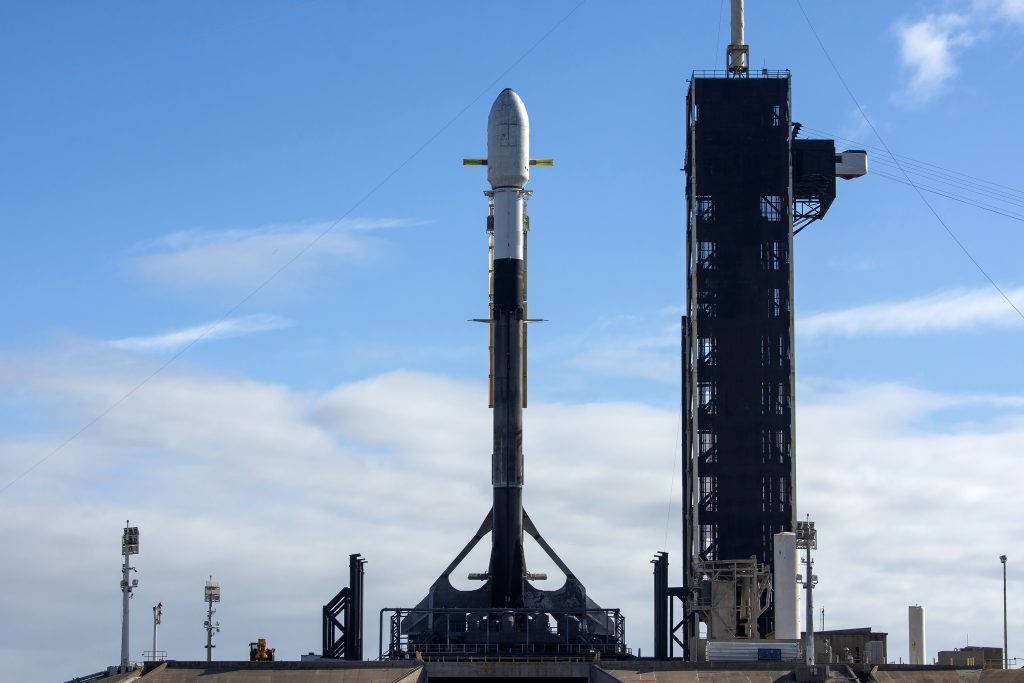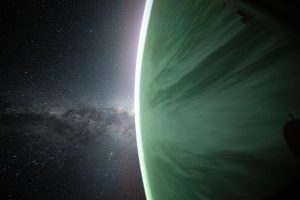Sending instruments to the Moon supports a growing lunar economy on and off Earth, and the next flight of NASA science and technology is only days away. NASA’s CLPS (Commercial Lunar Payload Services) initiative is a lunar delivery service that sends NASA science and technology instruments to various geographic locations on the Moon using American companies. These rapid, cost-effective commercial lunar missions at a cadence of about two per year improve our understanding of the lunar environment in advance of future crewed missions to the Moon as part of the agency’s broader Artemis campaign.
Of the 11 active CLPS contracts, there have been three CLPS launches to date: Astrobotic’s Peregrine Mission One, which collected data in transit but experienced an anomaly that prevented it from landing on the Moon; Intuitive Machines’ IM-1 mission, which landed, tipped over, and operated on the lunar surface; and Firefly Aerospace’s Blue Ghost Mission One that is currently enroute and scheduled to land in early March 2025. The CLPS contract awards cover end-to-end commercial payload delivery services, including payload integration, launch from Earth, landing on the surface of the Moon, and mission operations.
NASA’s fourth CLPS flight is from Intuitive Machines with their IM-2 mission. The IM-2 mission is carrying NASA science and technology instruments to Mons Mouton, a lunar plateau just outside of 5 degrees of the South Pole of the Moon, closer to the pole than any preceding lunar mission.
Scheduled to launch no earlier than Wednesday and land approximately eight days later, Intuitive Machines’ Nova-C lander, named Athena, will carry three NASA instruments to the lunar South Pole region – the Polar Resources Ice Mining Experiment-1 (PRIME-1) suite and the Laser Retroreflector Array (LRA).
The PRIME-1 suite consists of two instruments, the TRIDENT drill (The Regolith Ice Drill for Exploring New Terrain) and MSolo (Mass Spectrometer observing lunar operations), which will work together to extricate lunar soil samples, known as regolith, from the subsurface and analyze their composition to further understand the lunar environment and gain insight on potential resources that can be extracted for future examination.
The meter-long TRIDENT drill is designed to extract lunar regolith, up to about three feet below the surface. It will also measure soil temperature at varying depths below the surface, which will help to verify existing lunar thermal models that are used for ice stability calculations and resource mapping. By drilling into the lunar regolith, information is gathered to help answer questions about the lunar regolith geotechnical properties, such as soil strength, both at the surface and in the subsurface that will help inform Artemis infrastructure objectives. The data will be beneficial when designing future systems for on-site resource utilization that will use local resources to create everything from landing pads to rocket fuel. The lead development organization for TRIDENT is Honeybee Robotics, a Blue Origin Company.
The MSOLO instrument is a mass spectrometer capable of identifying and quantifying volatiles (or gasses that easily evaporate) found at or beneath the lunar surface, including– if it’s present in the regolith within the drill’s reach – water and oxygen, brought to the surface by the TRIDENT drill. This instrument can also detect any gases that emanate from the lander, drilling process, and other payloads conducting operations on the surface. Using MSolo to study the volatile gases found on the Moon can help us understand how the lander’s presence might alter the local environment. The lead development organization is INFICON of Syracuse, New York, in partnership with NASA’s Kennedy Space Center in Florida.
NASA’s LRA is a collection of eight retroreflectors that enable precision laser ranging, which is a measurement of the distance between the orbiting or landing spacecraft to the reflector on the lander. The LRA instrument is passive, meaning it does not power on. It will function as a permanent location marker on the Moon for decades to come, similar to its predecessors. The lead development organization is NASA’s Goddard Space Flight Center in Greenbelt, Maryland.
In addition to the CLPS instruments, two technology demonstrations aboard IM-2 were developed through NASA’s Tipping Point opportunity. These are collaborations with the agency’s Space Technology Mission Directorate and industry that support development of commercial space capabilities and benefit future NASA missions.
Intuitive Machines developed a small hopping robot, Grace, named after Grace Hopper, computer scientist and mathematician. Grace will deploy as a secondary payload from the lander and enable high-resolution imaging and science surveying of the lunar surface, including permanently shadowed craters around the landing site. Grace is designed to bypass obstacles such as steep inclines, boulders, and craters to cover a lot of terrain while moving quickly, which is a valuable capability to support future missions on the Moon and other planets, including Mars.
Nokia will test a Lunar Surface Communications System that employs the same cellular technology here on Earth. Reconceptualized by Nokia Bell Labs to meet the unique requirements of a lunar mission, this tipping point technology aims to demonstrate proximity communications between the lander, a Lunar Outpost rover, and the hopper.
Launching as a rideshare alongside the IM-2 mission, NASA’s Lunar Trailblazer spacecraft also will begin its journey to lunar orbit where it will map the distribution of water – and other forms of water – on the Moon.
Future CLPS flights will continue to send payloads to the near side, far side, and South Pole regions of the Moon where investigations and exploration are informed by each area’s unique characteristics. With a pool of 13 American companies under CLPS, including a portfolio of 11 lunar deliveries by five vendors sending more than 50 individual science and technology instruments to lunar orbit and the surface of the Moon, NASA continues to advance long-term exploration of the Moon, and beyond to Mars.








